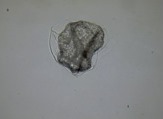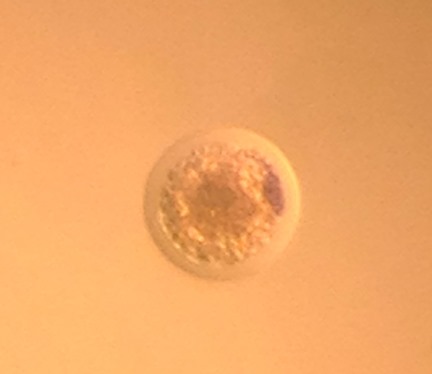The majority of equine embryos are collected from the donor mare and transferred immediately as fresh embryos or shipped cooled to a recipient station for transfer within 24 hr. You can learn more about the basics of embryo transfer (ET) in our article, Embryo Transfer and Frequently Asked Questions. Very few equine embryos are frozen despite the numerous advantages of embryo cryopreservation. We discuss the process of freezing embryos in our article, Cryopreservation of Equine Embryos. However here is a quick review of some of the advantages of freezing embryos:
- Minimize the number of recipients and thus decrease the cost of embryo transfer.
- Ability to bank embryos, especially from young mares while their performance and the genetic value is being determined
- Exportation or importation of embryos
- Transport of frozen embryos may have less health risks than importing live animals
- Collection and cryopreservation of embryos in the off season so they can be transferred early the following breeding season
- Cryopreservation of an embryo while genetic testing or sexing is being conducted
- In vitro produced embryos can be taken out of culture as a morulae or early blastocyst and frozen at the appropriate size and stage of development
 Until recently most of the pregnancy data on frozen/thawed equine embryos was from experiments conducted in University settings. However, recently data were acquired from two large Quarter Horse farms that used the commercial vitrification kit from Vetoquinol to freeze a large number of embryos. Farm 1 reported a 25 day pregnancy rate of 62% based on 421 embryos while Farm 2 reported a 51% pregnancy rate at 45 days from 239 embryos. Based on these results it appears that equine embryos can be vitrified (photo left of vitrified embryo) and provide good pregnancy rates which are comparable to frozen/thawed bovine embryos.
Until recently most of the pregnancy data on frozen/thawed equine embryos was from experiments conducted in University settings. However, recently data were acquired from two large Quarter Horse farms that used the commercial vitrification kit from Vetoquinol to freeze a large number of embryos. Farm 1 reported a 25 day pregnancy rate of 62% based on 421 embryos while Farm 2 reported a 51% pregnancy rate at 45 days from 239 embryos. Based on these results it appears that equine embryos can be vitrified (photo left of vitrified embryo) and provide good pregnancy rates which are comparable to frozen/thawed bovine embryos.
However, the pregnancy rates after transfer of day 7 or 8 embryos (>300um) is usually less than 30% and thus these large embryos are not frozen. The reasons proposed as to why embryos >300 µm do not survive freezing and thawing are:
- the capsule impedes the penetration of the cryoprotectant
- thickness of the capsule has been shown to be correlated to freezability of the embryo
- small surface-area-volume ratio
- the large amount of blastocoel fluid
The most recent studies on embryo freezing have centered on how to manipulate the large embryo prior to freezing to make them more viable after freezing and thawing. The most promising approach has been to deflate the embryo of blastocoel fluid prior to freezing. Unfortunately, this is best done using a micromanipulator. This is an expensive piece of equipment and requires a skilled technician. Based on a small number of embryos that have been transferred experimentally, it would appear that if 70-90% of the fluid is removed prior to vitrification the pregnancy rates after transfer of these day 7 embryos can be as high as 60-75%.
 Recently workers at Colorado State University reported on a method to manually collapse large equine embryos prior to vitrification. They compared a manual method against the standard micromanipulator method using a holding pipette and injection pipette. For the manual method a 25-gauge needle was used to puncture the capsule and remove fluid. There was a trend for pregnancy rates at 14 days to be greater for those embryos deflated by the micromanipulator (11 of 15) compared to those manually deflated (7 of 15). Pregnancy rates of the embryos collapsed by the micromanipulator were similar to those of fresh transferred embryos (25/28). This study confirmed the previous studies demonstrating excellent pregnancy rates with collapsed blastocysts after vitrification.
Recently workers at Colorado State University reported on a method to manually collapse large equine embryos prior to vitrification. They compared a manual method against the standard micromanipulator method using a holding pipette and injection pipette. For the manual method a 25-gauge needle was used to puncture the capsule and remove fluid. There was a trend for pregnancy rates at 14 days to be greater for those embryos deflated by the micromanipulator (11 of 15) compared to those manually deflated (7 of 15). Pregnancy rates of the embryos collapsed by the micromanipulator were similar to those of fresh transferred embryos (25/28). This study confirmed the previous studies demonstrating excellent pregnancy rates with collapsed blastocysts after vitrification.
In cattle, nearly 60% of the bovine embryos recovered are frozen. This percentage in the horse is estimated to be only 2-5% of the embryos collected even though freezing embryos could decrease the cost to maintain recipients and provide increased flexibility. Before an increase in the number of equine embryos frozen can occur there are several developments which need to take place. There needs to be an ability to consistently super ovulate mares so that extra embryos are available for freezing. A means of hastening the embryo through the oviduct so that small embryos can be obtained consistently or there needs to be improvements to manually deflate larger embryos prior to vitrification. The development of new international markets for frozen/thawed equine embryos will also help to increase the number of equine embryos frozen.





